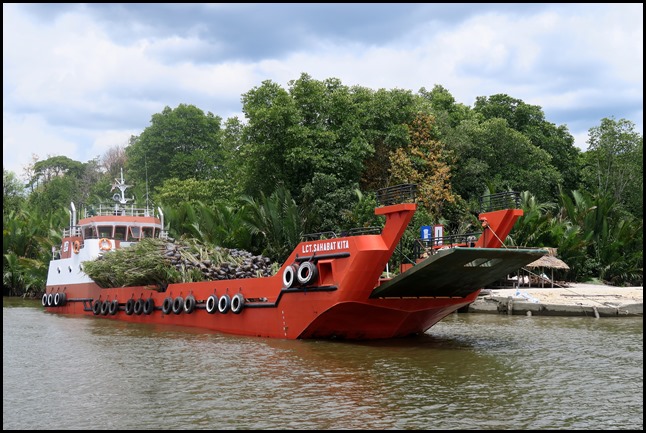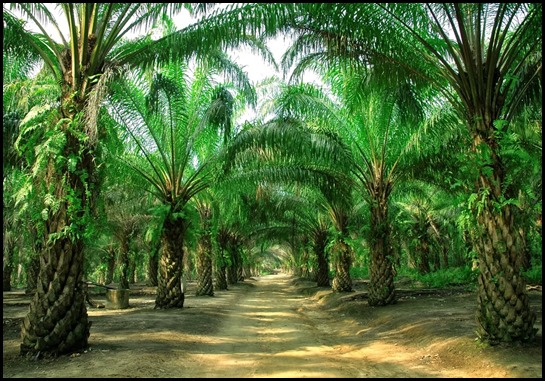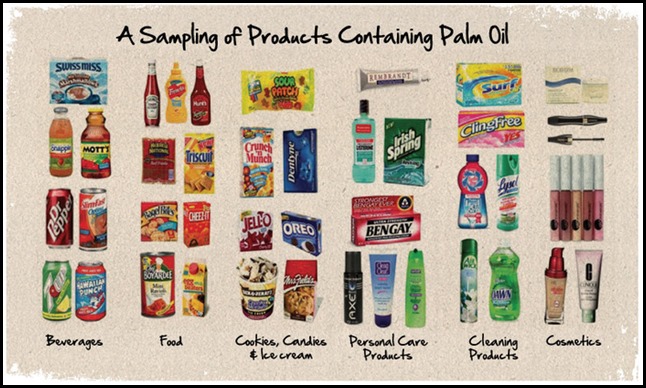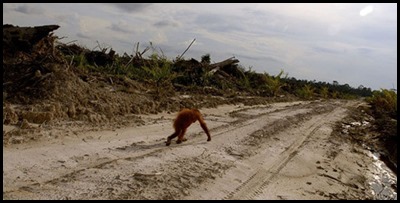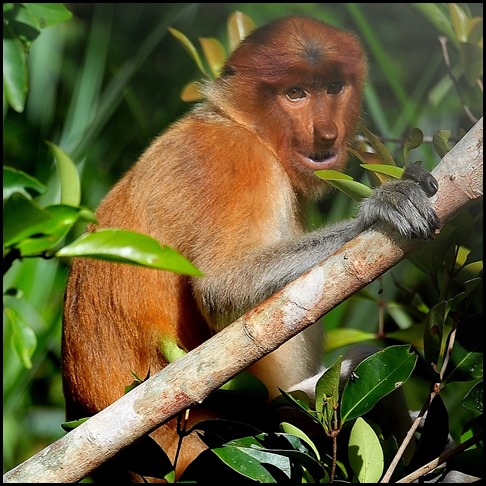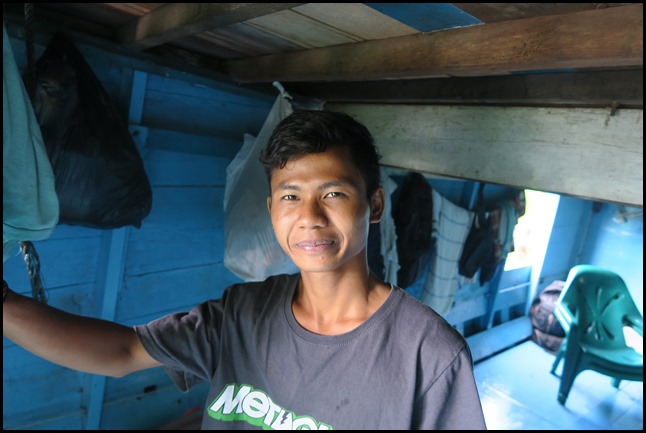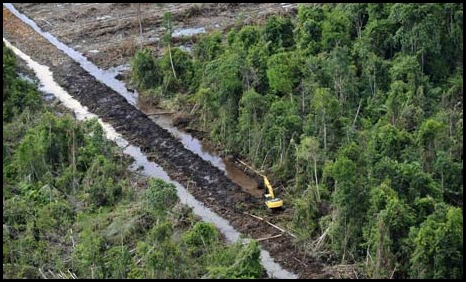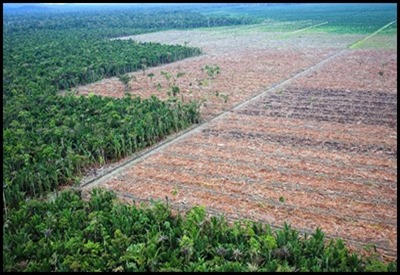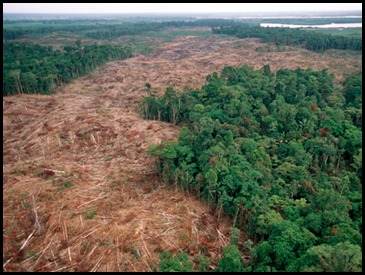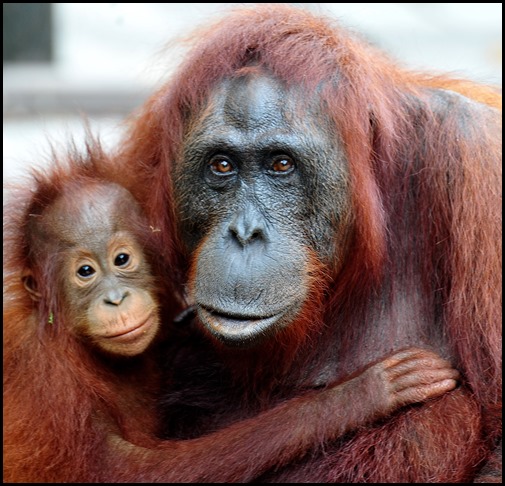Palm Oil

|
Palm Oil
Parked near Beez Neez was this girl laden with baby palms ready for planting. We had to confess to knowing little about the palm oil business other than seeing massive plantations as we have sailed through Indonesia.
Palm oil is a type of edible vegetable oil that is derived from the palm fruit, grown on the African oil palm tree. Oil palms are originally from Western Africa, but can flourish wherever heat and rainfall are abundant. Today, palm oil is grown throughout Africa, Asia, North America, and South America, with 85% of all palm oil globally produced and exported from Indonesia and Malaysia; but most of the time not using sustainable measures. The industry is linked to major issues such as deforestation, habitat degradation, climate change, animal cruelty and indigenous rights abuses in the countries where it is produced, as the land and forests must be cleared for the development of the oil palm plantations. According to the World Wildlife Fund, an area the equivalent size of 300 football fields of rainforest is cleared each hour to make way for palm oil production. This large-scale deforestation is pushing many species to extinction, and findings show that if nothing changes species like the orangutan could become extinct in the wild within the next 5-10 years, and Sumatran tigers less than 3 years.
In total, tens of millions of tons of palm oil is produced annually, accounting for over 30% of the world’s vegetable oil production. This single vegetable oil is found in approximately 40-50% of household products in many developed countries like Australia. Palm oil can be present in a wide variety of products, including baked goods, confectionery, shampoo, cosmetics, cleaning agents, washing detergents and toothpaste.
Impacts on
Environment: A large proportion of palm oil expansion occurs at the
expense of biodiversity and ecosystems in the countries it is produced.
Currently, a third of all mammal species in Indonesia are considered to be
critically endangered as a consequence of this unsustainable development that is
rapidly encroaching on their habitat.
Impacts on Animals: There are over 300,000 different animals found throughout the jungles of Borneo and Sumatra, many of which are injured, killed and displaced during deforestation. In addition, palm oil development increases accessibility of animals to poachers and wildlife smugglers who capture and sell wildlife as pets, use them for medicinal purposes or kill them for their body parts. The destruction of rainforests in Borneo and Sumatra is therefore not only a conservation emergency, but a major animal welfare crisis as well. Wildlife such as orangutans have been found buried alive, killed from machete attacks, guns and other weaponry. Government data has shown that over 50,000 orangutans have already died as a result of deforestation due to palm oil in the last two decades. This either occurs during the deforestation process, or after the animal enters a village or existing palm oil plantation in search of food. Mother orangutans are also often killed by poachers and have their babies taken to be sold or kept as pets, or used for entertainment in wildlife tourism parks in countries such as Thailand and Bali. Other megafauna that suffer as a result of this development include species like the Sumatran Tiger, Sumatran Rhinoceros, Sun Bear, Pygmy Elephant, Clouded Leopard and Proboscis Monkey. Road networks that are constructed to allow palm oil plantation workers and equipment access to the forest also increase accessibility of these areas to poachers that are looking for these kinds of valuable animals. This allows poachers to comfortably drive to an area to sit and wait for their target where previously they may have had to trek through inaccessible areas of forest.
Impacts on People: The
establishment of oil palm plantations is often promoted as a way of bringing
development to poor, rural regions of Borneo and Sumatra. While palm oil
production does provide employment to many people in Southeast Asia, the
industry has also had devastating impacts on groups of people in this region.
All too often, the government’s main interest in the country’s economy leads
them to allow corporations to take the land owned by indigenous peoples for
their own financial benefit.
Sustainable Palm Oil: Sustainable palm
oil is an approach to oil palm agriculture that aims to produce palm oil without
causing deforestation or harming people. Sustainable
palm oil has been under fire for several years from environmentalists and
organisations who feel it is nothing more than a greenwashing scheme. This view
did not improve within the environmental community upon the formation of the
RSPO (Roundtable on Sustainable Palm Oil) in 2004, but many feel that this
widely accepted certification scheme has the potential to prevent deforestation
in the industry.
History of Palm Oil:
Oil palms are originally from West Africa, but were
brought to South-East Asia at the beginning of the 20th century. The primary
demand for the industry's expansion came from the British Industrial Revolution.
At the time, 250,000 tonnes of palm oil were being exported annually from
South-East Asia. This figure has risen to over 60,000,000 tonnes today.
Greenpeace advertisements.
Controversies in Development: Tea break in the office. The slogan ’Have a Break’ flashes onto the screen. A weary-looking employee unwraps a Kit Kat energy snack and bites into the biscuit without looking. Horrendously, the chocolate bar is actually a hairy paw. Blood spurts onto a keyboard. Up pops the slogan: ‘Give the orang-utan a break.’ This Greenpeace clip produced in 2009 went viral on the Internet. The aim was to pressure the Kit Kat brand’s multinational owner Nestlé to stop sourcing from the main Indonesian palm oil producer Sinar Mas through its subsidiary Smart. The green campaigning group is identifying the Indonesian firm as responsible for the destruction of many forests, in blatant disregard of regulations and the wishes of local communities. The campaign paid off: Nestlé stopped purchasing from Sinar Mas in early 2010.
A Cause for Global Warming: Forests are laid waste in particular through the deliberate setting of forest fires which release huge amounts of CO2, particularly in peatland areas like Sumatra’s Riau region. Deforestation is estimated to be responsible for a fifth of global greenhouse gas emissions. It has made Indonesia the third largest contributor to this major cause of global warming. Replanting oil palms will not help recreate carbon sinks: a dense humid tropical forest holds 150 tonnes a year, compared to a palm plantation that only fixes 30- 35 tonnes at best. Oil palm growing also requires the intensive use of highly polluting fertilizers and large volumes of water. It is an exclusive monocrop: nothing grows under the palms, and after twenty to twenty-five years of intensive farming, the land is often left idle and uncropped.
Indonesia under critical fire: One country stands out from the rest where palm oil is concerned. Indonesia is the world’s leading producer with 21.5 million tonnes for the 2009-2010 season (45% of world production). The overtaken runner-up, Malaysia, halted its expansion some years ago, and Malaysian investors are now actively buying up plantations … in Indonesia. Oil palms were introduced to the country in the early 20th century by the Belgian crop scientist Adrien Hallet, and spread throughout the islands in the Suharto era through the roll-out of major industrial projects to exploit the untapped resources of the country’s larger islands – chiefly Kalimantan (Borneo) and Sumatra - accompanied by a policy of transmigration to move whole communities from the archipelago’s overpopulated central islands like Java to the more sparsely populated outlying areas. Estimates of the area planted with oil palms in Indonesia vary between 4 and 6 million hectares, 3 million of it (an area the size of Belgium) from the recent conversion of primeval forests. It is one part of the massive deforestation taking place. Greenpeace Belgium estimates that 74 million hectares (an area twice the size of Germany) of the country have been deforested in the past 50 years, causing the loss of 40% of the country’s old-growth forest. The UNEP (United Nations Environment Programme) estimates that at this rate, 98% of this virgin forest will be destroyed by 2022.
ALL IN ALL DEVASTATING BUT SO PROFITABLE........... PROGRESS CAN BE VERY SAD
|
